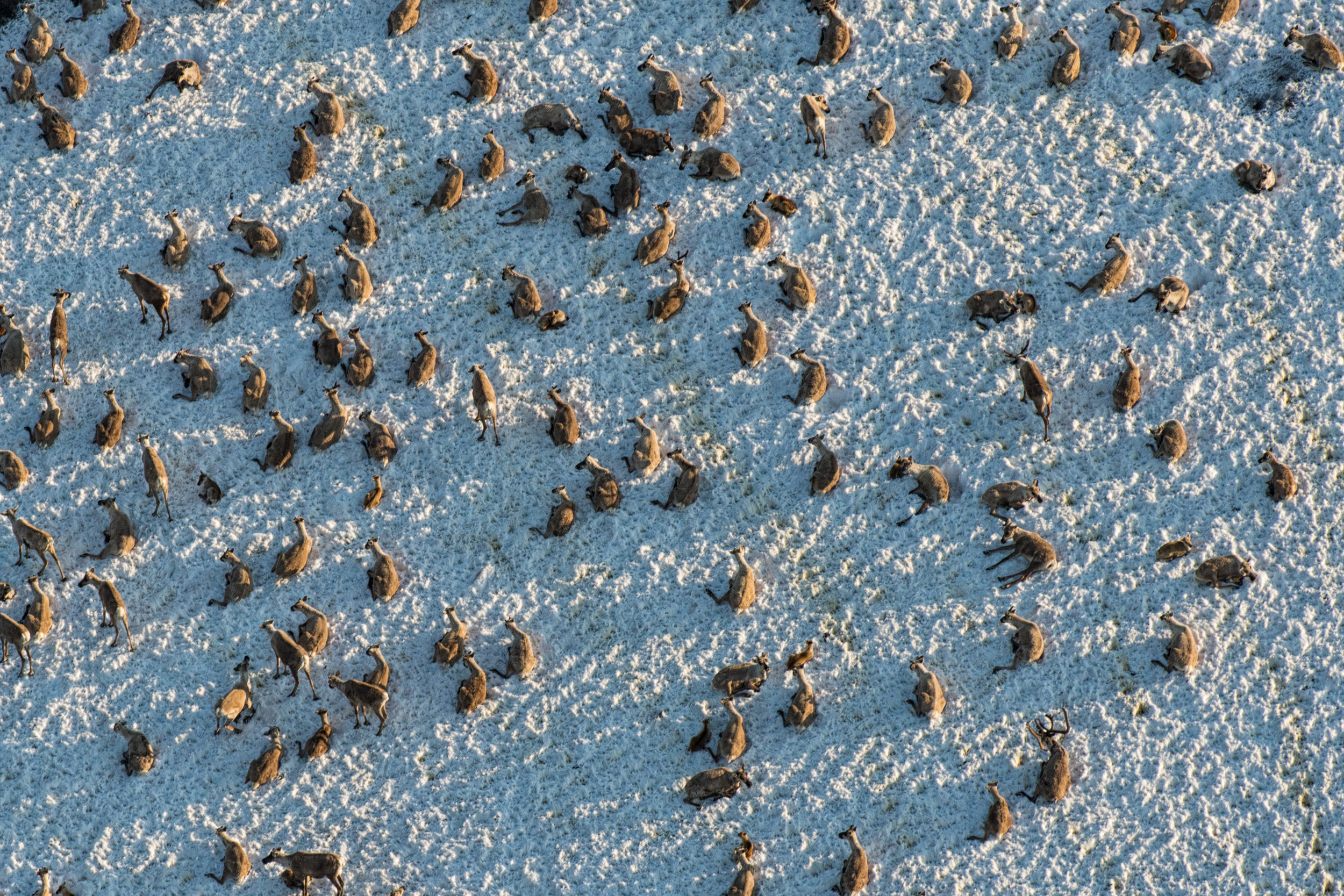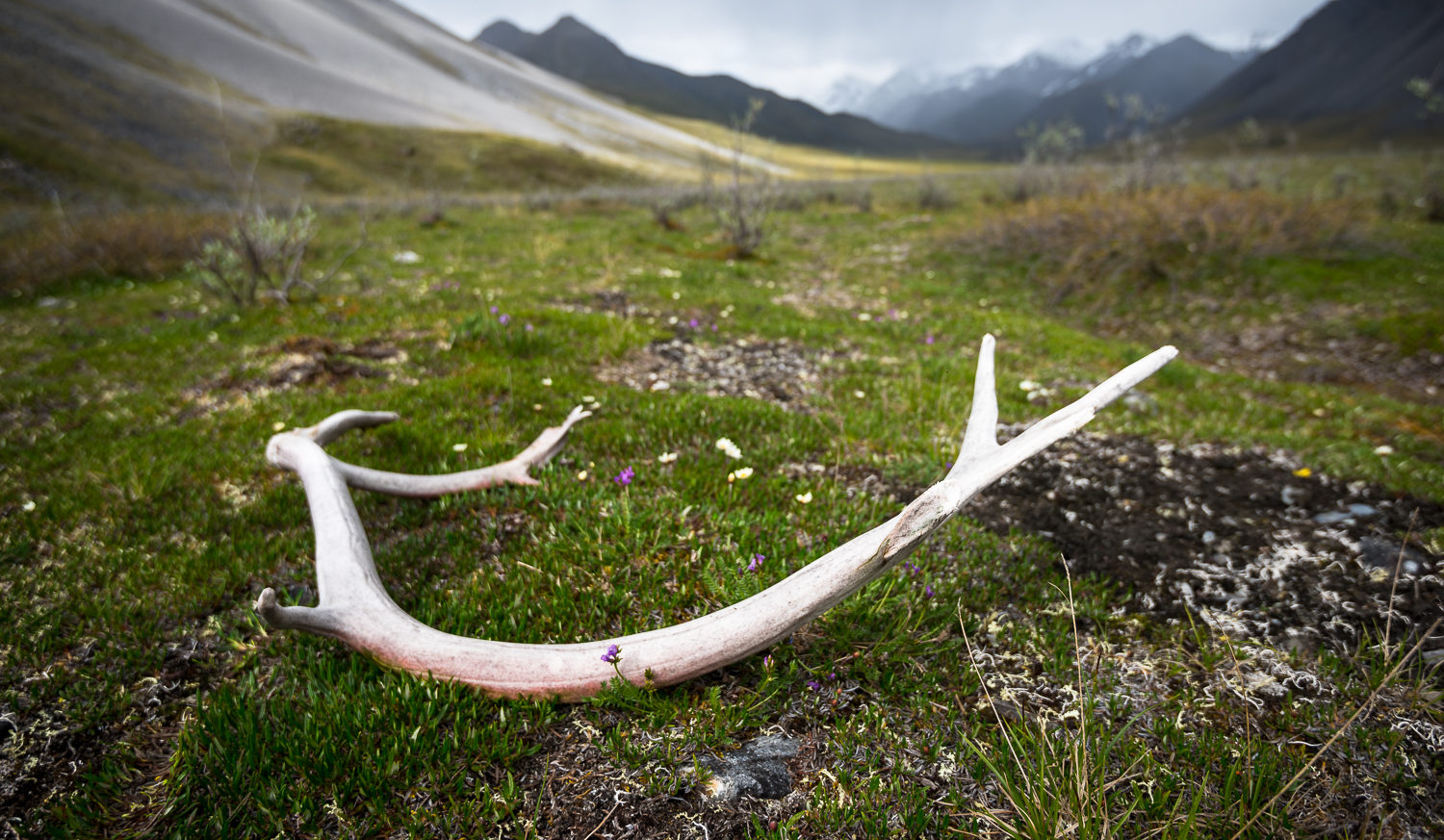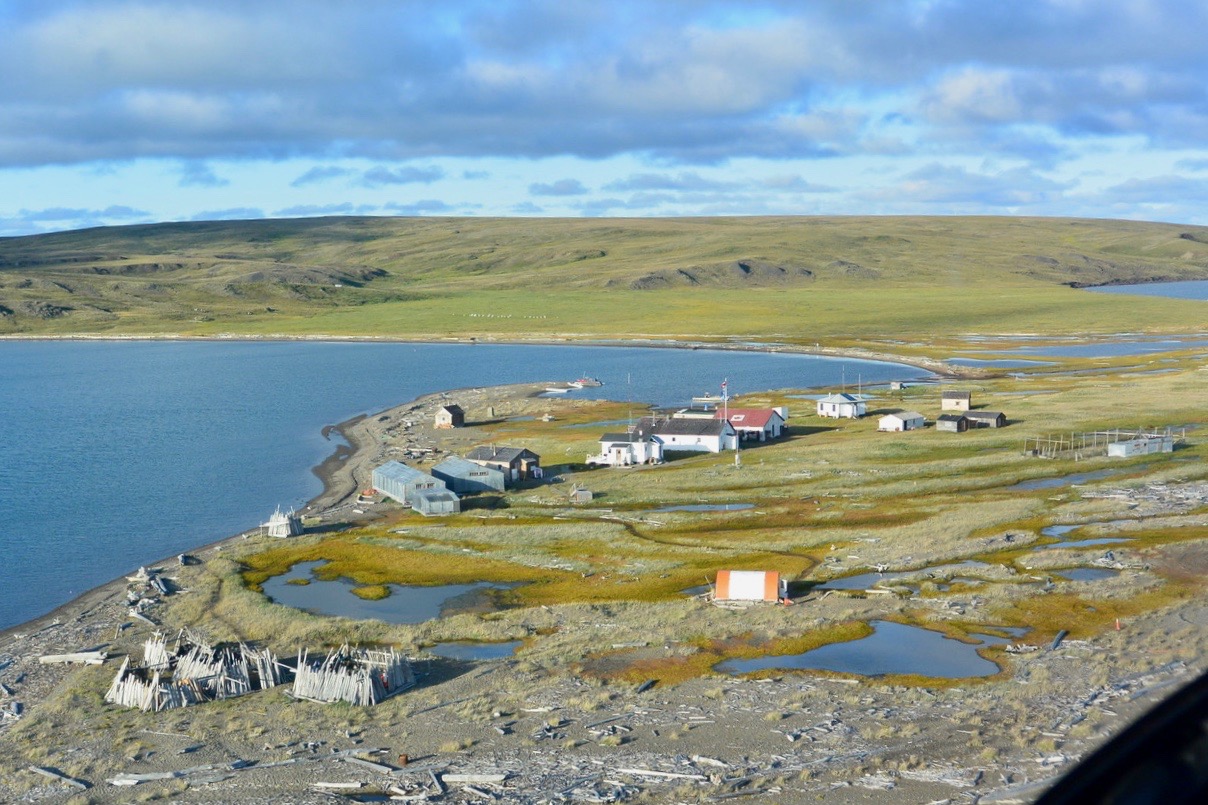
Rocky Mountain coal mine in Alberta takes next step to expansion
In Alberta, a massive open-pit coal mine near Jasper National Park is hoping to expand...
A great expanse of tundra in the northeast corner of the Yukon is now protected by an Indigenous-led conservation area, safeguarding important Inuvialuit harvesting areas for future generations.
Aullaviat/Anguniarvik Traditional Conservation Area covers almost 850,000 hectares of land nestled between the Beaufort Sea to the north, Ivvavik and Vuntut national parks to the west and the Northwest Territories to the east. With the establishment of this new conservation area, a decades-old vision to protect the northern stretch of the Yukon used by the Porcupine caribou herd comes to fruition.
“That’s one of our main sources of harvesting and in this day and age I think you need to protect that. Because something that money can’t buy is the food that we eat and the traditions that we practice on the land,” Billy Storr, a member of the Aullaviat/Anguniarvik working group and president of the Aklavik Hunters and Trappers Committee, told The Narwhal.
The new conservation area is also significant as Canada strives to meet its international commitments to protect 30 per cent of land and waters by 2030, as part of global efforts to stem nature losses. The Yukon is leading conservation efforts among provinces and territories, having protected 21.1 per cent of land, including Aullaviat/Anguniarvik, which covers 1.8 per cent of the territory.
“Indigenous-led conservation is one of the most important pathways for achieving Canada’s biodiversity goals and sustaining long-term conservation gains,” federal Environment and Climate Change Minister Steven Guilbeault said in a press release.

Generations of Inuvialuit have hunted caribou, fished and harvested berries in Aullaviat/Anguniarvik (pronounced Au-la-vat/Angu-niag-a-vik). And for the community of Aklavik, a small hamlet north of the Arctic Circle in the Northwest Territories, the area continues to be very important.
“It’s been in our history for years, and it’s going to be in our history for more years to come,” Michelle Gruben, the resource person for the Aklavik Hunters and Trappers Committee, said.
“The wording Aullaviat/Anguniarvik means ‘where the animals travel through and where people harvest,’ ” Gruben explained.
Every summer Gruben travels from Aklavik, just east of the Yukon border, with her family to Shingle Point in Aullaviat/Anguniarvik on the Arctic coast to harvest fish, caribou and berries. There’s always a cool breeze coming off the water, she said. “You might see caribou running along the beach.”
“It’s just a magical place,” Gruben said. To see it named Aullaviat/Anguniarvik is “so exciting,” she adds. “I even get little goosebumps on my arm as I’m talking.”
A trust fund is being established with a federal contribution of $10 million and an additional $3.5 million from philanthropic foundations. The fund will support the implementation of a management plan and the development of a stewardship and Guardians program.
“This funding will allow Inuvialuit in Aklavik to get out on the land, share knowledge between generations, fill our freezers and secure a healthy and vibrant future for our young people and for Aklavik,” Jordan McLeod, the president and chair of the Aklavik Community Corporation, said in the press release. “We need to be out on the land to keep it healthy,” McLeod said.
With more shipping activity in Arctic waters and a growing number of cruise ships requesting to stop at Herschel Island-Qikiqtaruk Territorial Park off the Yukon coast, Gruben said the Guardians program is “very important.”
“They can be our eyes and ears on the land,” she said.

Inuvialuit have long known the importance of the Yukon North Slope, as the northern stretch of the territory between Alaska and the Northwest Territories has come to be known.
But by the 1970s, its future was threatened. Oil and gas reserves had been discovered at Prudhoe Bay in Alaska in the late 1960s, plans for a gas pipeline right across northern Yukon were on the table and exploration was underway in the Mackenzie River Delta to the east.
The federal government tasked Justice Thomas Berger with assessing the impacts of potential gas pipelines running from Alaska across the northern Yukon to the Mackenzie Delta and then south through the Mackenzie Valley, in what’s known as the Mackenzie Valley Pipeline Inquiry.
In his landmark 1977 report, which leaned heavily on Indigenous consultation, Berger recommended the entire northern stretch of the Yukon be protected by a wilderness park. Among his key concerns about a northern energy corridor were the risks it would pose to the Porcupine caribou herd.

In 1984, after a decade of negotiations, the federal government and the Inuvialuit signed the Inuvialuit Final Agreement, one of the first modern comprehensive land claim agreements. They agreed the Yukon North Slope would fall under a “special conservation regime” with a goal to protect wildlife, habitat and traditional uses. The agreement also established Ivvavik National Park and Herschel Island-Qikiqtaruk Territorial Park and several co-management bodies. A decade later, the Vuntut Gwitchin First Nation Final Agreement established Vuntut National Park just south of Ivvavik.
Inuvialuit negotiators had adopted Berger’s recommendation that the entire Yukon North Slope should be protected by a wilderness park. And, though the region was closed to development, it took a long time — and extensive Indigenous Knowledge and scientific studies — for the parties to the Inuvialuit Final Agreement to agree on a level of conservation for that eastern part of the North Slope, according to Jennifer Smith, chair of the Wildlife Management Advisory Council for the Yukon North Slope.
Aullaviat/Anguniarvik protects important summer foraging grounds for the Porcupine caribou herd as well as habitat for grizzlies, polar bears, moose and muskox and completes a network of conservation areas protecting the entire Yukon North Slope.

The Porcupine caribou range stretches from Alaska across the Yukon and into the Northwest Territories. Each year the herd — a population of more than 200,000 barren-ground caribou, one of the largest herds in Canada — migrates vast distances between the Arctic coast in the spring and their wintering grounds, which in the Yukon fall south of the Porcupine River.
With the establishment of the Aullaviat/Anguniarvik Traditional Conservation Area most of the Porcupine caribou range in Canada is now fully protected. In Alaska, however, critical calving grounds in the Arctic National Wildlife Refuge, known as the 1002 lands, remain at risk to potential oil and gas drilling in the future.
“That’s been a long-going, enduring fight,” Smith told The Narwhal.
Even as efforts to protect Porcupine caribou calving grounds continue, establishing Aullaviat/Anguniarvik in the herd’s summer and fall foraging grounds is a significant milestone.
“When the Porcupine caribou herd is moving through that landscape, it’s like the stillness comes alive with life, with sound, with colour,” Smith said.
Here, the ocean breeze keeps the insects at bay as caribou build up the stores they need to survive the winter, and for cows, the weight they need to support their next pregnancy.

To see this area protected through the Aullaviat/Anguniarvik Traditional Conservation Area is “really significant,” Smith said, adding that “it wouldn’t be possible without the strong vision of Aklavik leadership.”
Storr said he’s “very excited” to see the conservation area finally established.
“We’ve had a few stumbling blocks along the way where it kind of derailed and went off kilter,” he said. “But we were persistent.”
“I’m 71 now, so it’s for my family, and not only my family but all the other families in Aklavik that rely on this area too for harvesting” he said. “That’s something near and dear to my heart.”
Get the inside scoop on The Narwhal’s environment and climate reporting by signing up for our free newsletter. A $335 million funding commitment to fund...
Continue reading
In Alberta, a massive open-pit coal mine near Jasper National Park is hoping to expand...

A trade war could help remake B.C.’s food system, but will family farmers be left...

First Nations are leading efforts to make sure lake sturgeon can find a home in...
